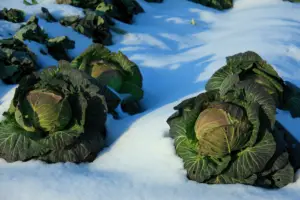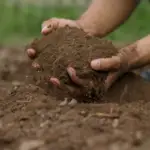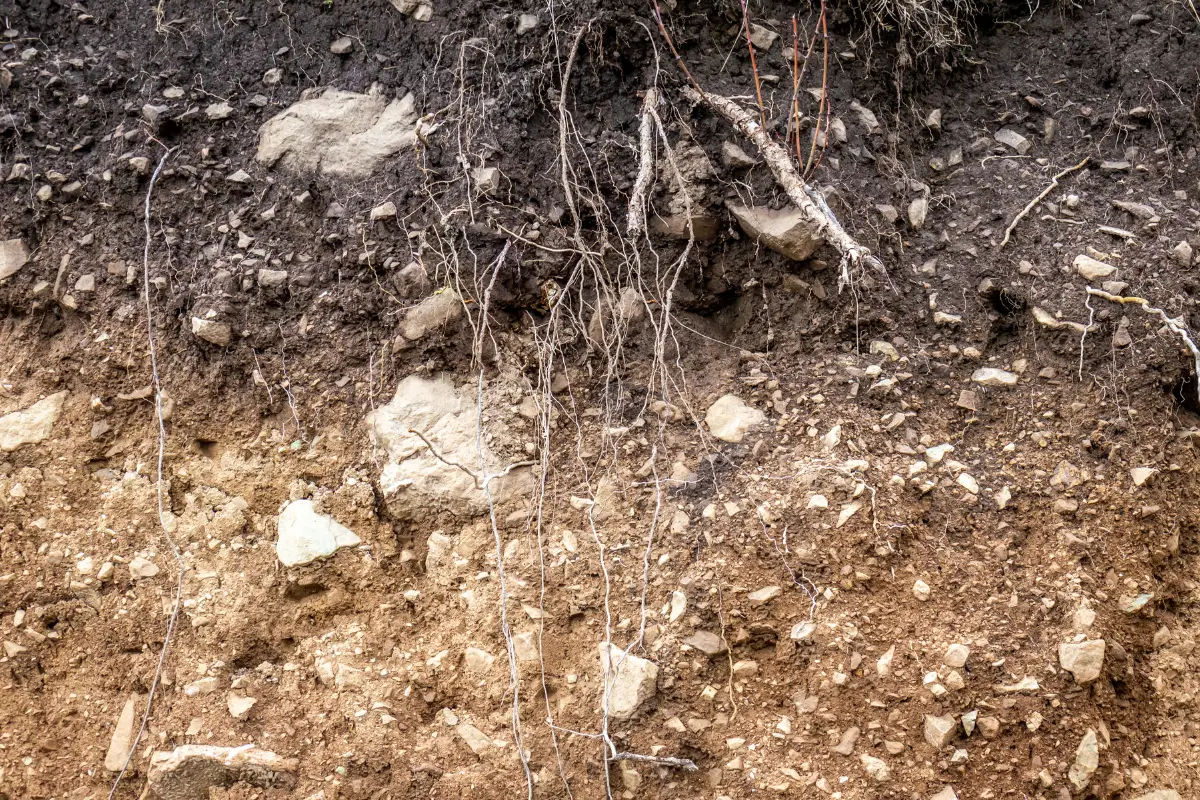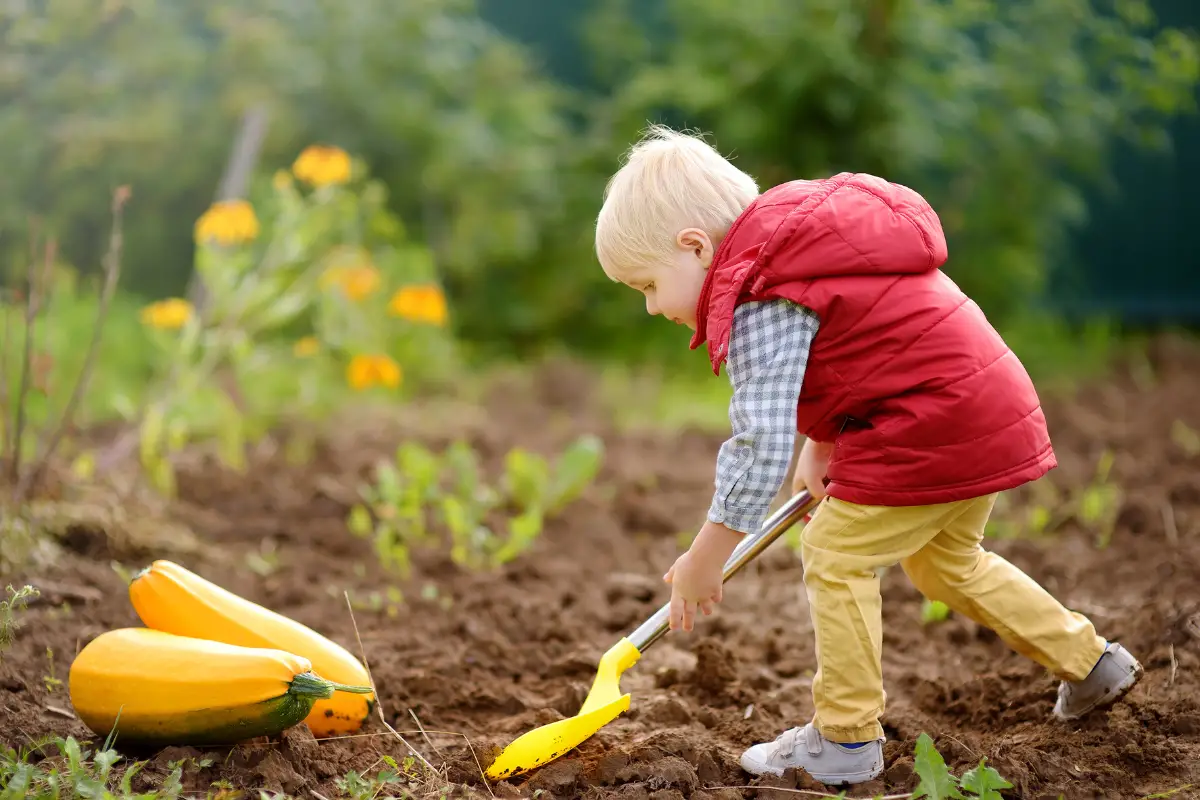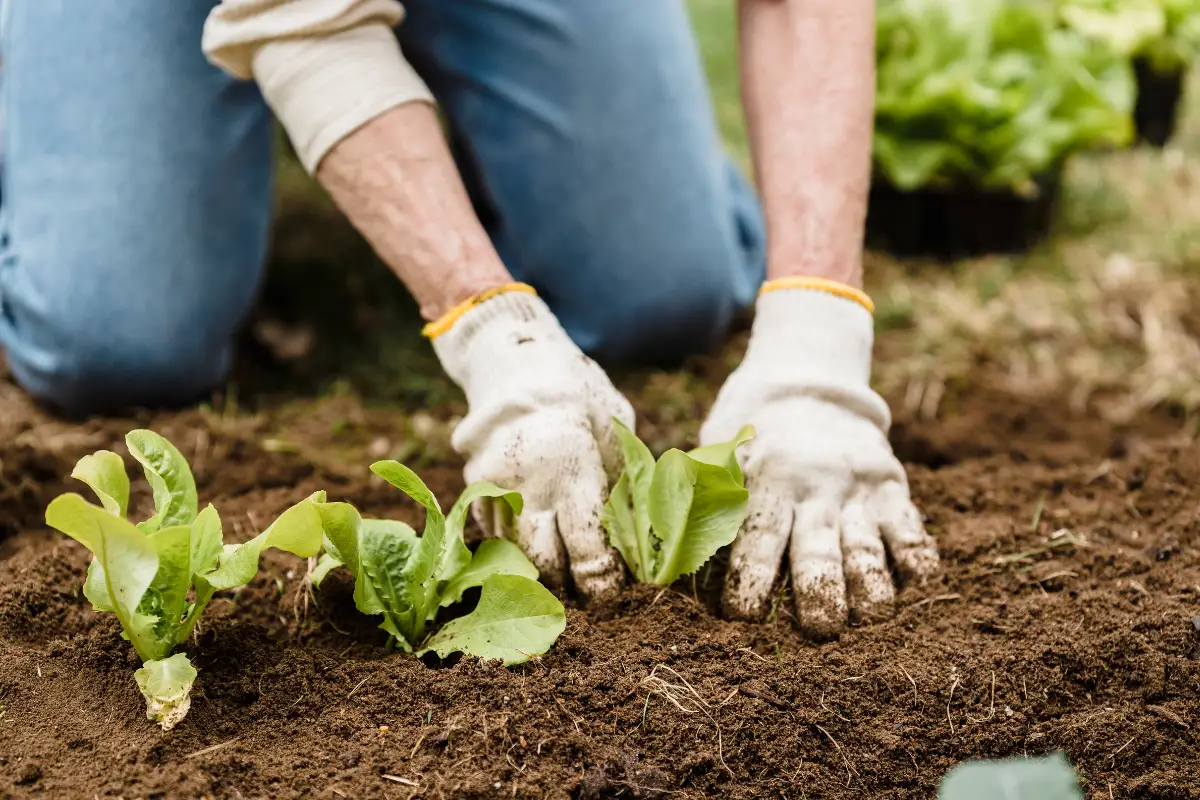Peat soil is a type of soil that is formed from partially decomposed organic matter. It is commonly found in wet and acidic environments such as bogs, marshes, and swamps.
Peat soil is unique in its characteristics and has been used for various purposes throughout history.
One of the defining characteristics of peat soil is its high water-holding capacity.
Due to its high porosity, peat soil can hold a large amount of water, making it an ideal soil for plants that require moist conditions.
Additionally, peat soil is often used as a soil amendment for potting soil due to its ability to increase aeration and prevent compaction.
However, despite its benefits, there are also some drawbacks to using peat soil.
For example, the extraction of peat soil can have negative environmental impacts, and there are concerns about the sustainability of its use.
Understanding the characteristics of peat soil is important for making informed decisions about its use and management.
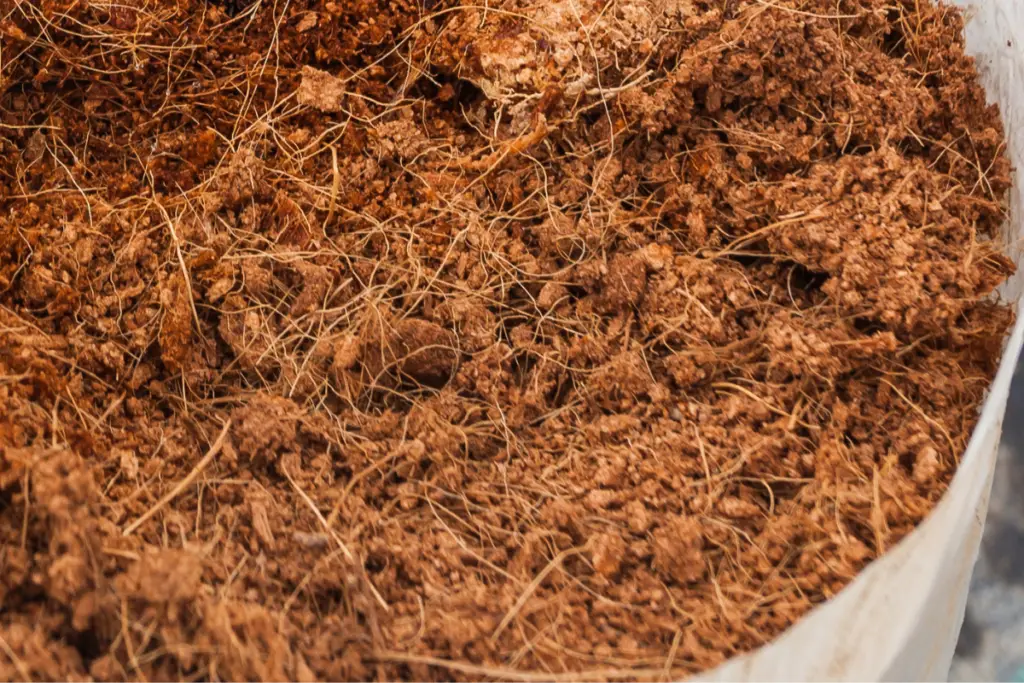
Table of Contents
Definition of Peat Soil
Peat soil is a type of soil that forms over thousands of years from the decomposition of organic materials, such as sphagnum moss and other plant remains.
It is a dark brown or black soil that is rich in organic matter and is found in wetland areas, such as bogs and swamps.
Peat soil is characterized by its high moisture content, low density, and high acidity. It is also known for its ability to hold water, which makes it an ideal soil for plants that require a lot of moisture.
However, its high acidity can make it difficult for some plants to grow, and it may need to be amended with lime or other materials to adjust the pH level.
Peat soil is unique in that it is composed of partially decomposed organic matter, which means that it is not fully mineralized like other types of soil.
This makes it an important source of carbon storage, as it can sequester large amounts of carbon dioxide from the atmosphere.
- 🌴【Coco Coir Brick】: Made of 100% natural organic coconut coir, which extracted from the husk on the outer shell of a coconut, low EC and suitable pH can provide a healthy growing environment for most flowers and plants, so it can cultivate flowers and economical plant products without soil, and can also cultivate seedlings
Prices pulled from the Amazon Product Advertising API on:
Product prices and availability are accurate as of the date/time indicated and are subject to change. Any price and availability information displayed on [relevant Amazon Site(s), as applicable] at the time of purchase will apply to the purchase of this product.
Formation of Peat Soil
Peat soil is formed through the accumulation of partially decomposed plant material in waterlogged conditions.
The process of peat formation is slow and can take centuries to thousands of years.
Peat soil is found in wetlands, bogs, marshes, and other areas where water is abundant and oxygen is limited.
Plant Material Decay
The formation of peat soil begins with the growth and decay of plant material. When plants die, their remains fall into the water and begin to decompose.
In waterlogged conditions, the decay process is slowed down because there is limited oxygen available. As a result, the plant material breaks down slowly and accumulates over time.
The type of plant material that accumulates in peat soil depends on the local climate and vegetation.
In colder climates, peat soil may be composed of sphagnum moss, while in warmer climates, it may be composed of reeds, sedges, and other wetland plants.
Waterlogged Conditions
Waterlogged conditions are essential for the formation of peat soil. When plant material accumulates in water, it is protected from decay by the lack of oxygen.
Over time, the waterlogged conditions cause the plant material to compress and become more compact.
As the plant material becomes more compact, it begins to form peat soil.
The degree of decomposition and fiber content of the peat can be categorized into three types: fibrous peat, hemic or semifibrous peat, and sapric or amorphous peat.
The degree of decomposition of fibrous peat is low, hence the plant structure can easily be recognized.
Physical Characteristics of Peat Soil
Peat soil is a unique type of soil that is formed from decomposed organic materials, such as sphagnum moss, over thousands of years.
It is characterized by its high organic content and acidic nature. In this section, we will discuss the physical characteristics of peat soil, including its color and texture, as well as its porosity.
Color and Texture
Peat soil is typically dark brown to black in color, due to its high organic content.
The texture of peat soil can vary from fibrous to amorphous, depending on the degree of decomposition of the organic material.
In general, peat soil has a spongy texture that is easily compressed.
Porosity
Peat soil has a high porosity, which means that it contains many small spaces or pores. These pores are created by the decomposition of organic matter, which leaves behind voids in the soil.
The porosity of peat soil allows it to hold a large amount of water, making it an important component of wetland ecosystems.
The porosity of peat soil can be divided into two types: macro-porosity and micro-porosity. Macro-porosity refers to the larger pores in the soil, which are typically greater than 75 microns in diameter.
These larger pores allow for the movement of air and water through the soil.
Micro-porosity, on the other hand, refers to the smaller pores in the soil, which are typically less than 75 microns in diameter.
These smaller pores are important for water retention and nutrient storage in the soil.
Chemical Characteristics of Peat Soil
Peat soil is characterized by its unique chemical properties that distinguish it from other soil types.
In this section, we will discuss the key chemical characteristics of peat soil.
pH Level
Peat soil is generally highly acidic due to the accumulation of organic matter over time.
The pH level of peat soil can range from 3.0 to 5.5, which is much lower than the ideal pH range for most plants.
This high acidity can limit the availability of nutrients in the soil and can also affect the microbial activity in the soil.
Organic Matter Content
Peat soil is composed primarily of organic matter, which is the result of the accumulation of partially decomposed plant material over time.
The organic matter content of peat soil can range from 60% to 95%, which is much higher than other soil types.
This high organic matter content makes peat soil an excellent source of nutrients for plants, but it also makes the soil more prone to compaction and erosion.
Nutrient Availability
Peat soil has a low nutrient availability due to its high acidity and low mineral content.
The low nutrient availability can limit plant growth and can also affect the microbial activity in the soil.
However, peat soil is rich in micronutrients such as iron, manganese, and zinc, which can be beneficial for plant growth.
Biological Characteristics of Peat Soil
Peat soil is a unique type of soil that is rich in organic matter and has a distinctive set of biological characteristics.
This section will explore the microbial activity, flora, and fauna that make up the biological characteristics of peat soil.
Microbial Activity
Peat soil is home to a diverse range of microorganisms that play important roles in the decomposition of organic matter and nutrient cycling.
These microorganisms include bacteria, fungi, and archaea. The high acidity and low oxygen levels of peat soil create a unique environment that is well-suited to the growth of these microorganisms.
Studies have shown that the microbial activity in peat soil is highly influenced by factors such as temperature, moisture, and nutrient availability.
For example, warmer temperatures and higher moisture levels tend to increase microbial activity, while nutrient-poor conditions can limit microbial growth.
Flora and Fauna
Peat soil is also home to a variety of plant and animal species that have adapted to the unique conditions of this type of soil.
The flora of peat soil is characterized by a variety of mosses, sedges, and other low-growing plants that are able to thrive in the nutrient-poor environment of peat soil.
In terms of fauna, peat soil is home to a variety of insects, spiders, and other arthropods, as well as small mammals such as shrews and voles.
These animals play important roles in the ecosystem of peat soil, helping to break down organic matter and cycling nutrients through the soil.
Peat Soil Distribution
Peat soil is widely distributed around the world, with large deposits found in the northern hemisphere.
The largest peatlands are found in Canada, Russia, and Scandinavia.
In Canada, peatlands cover an area of over 1.2 million km², while in Russia, they cover an area of over 1.3 million km².
In Scandinavia, peatlands cover an area of over 500,000 km².
Peat soil can also be found in other parts of the world, including Europe, Asia, Africa, and South America.
In Europe, peatlands are found in the United Kingdom, Ireland, Germany, and Poland.
In Asia, peatlands are found in Indonesia, Malaysia, and China.
In Africa, peatlands are found in the Democratic Republic of Congo, while in South America, they are found in Brazil and Peru.
The distribution of peat soil is influenced by several factors, including climate, vegetation, and topography.
Peatlands are typically found in areas with cool and wet climates, where there is a high amount of precipitation and low evapotranspiration rates.
They are also found in areas with low nutrient availability, which limits the growth of vegetation and promotes the accumulation of organic matter.
Peatlands are typically found in low-lying areas, such as river valleys, coastal plains, and lake basins.
They can also be found in upland areas, such as mountains and plateaus, where there is a high amount of rainfall and low temperatures.
The distribution of peat soil is also influenced by human activities, such as drainage, agriculture, and peat extraction.
Benefits and Uses of Peat Soil
Peat soil is a type of soil that is rich in organic matter and has been used for various purposes for centuries.
Here are some of the benefits and uses of peat soil:
Agriculture
Peat soil has been used in agriculture for centuries. It is a good source of nutrients and has excellent water retention properties.
Peat soil is particularly useful for crops that require a lot of moisture, such as rice and cranberries.
Horticulture
Peat soil is also commonly used in horticulture. It is an excellent growing medium for plants, as it provides good drainage and aeration.
Peat soil is particularly useful for plants that require acidic soil, such as blueberries and rhododendrons.
Fuel Production
Peat soil is a valuable source of fuel. It is used to generate electricity and is also sold as briquettes for heating homes in cold climates.
Peat soil is an attractive fuel source because it is abundant and relatively inexpensive.
Environmental Impact of Peat Soil Extraction
Carbon Emissions
Peat soils are a significant source of carbon. When peat soil is extracted, the carbon that has been stored in the soil for thousands of years is released into the atmosphere.
This results in significant carbon emissions, which contribute to climate change.
According to a study by the United Nations Food and Agriculture Organization, peat soil extraction is responsible for around 5% of global greenhouse gas emissions.
Habitat Destruction
Peat soil extraction also results in the destruction of natural habitats. Peatlands are home to a variety of plant and animal species, many of which are endangered.
When peat soil is extracted, these habitats are destroyed, and the plants and animals that live there are displaced or killed.
This can have a significant impact on local ecosystems and biodiversity.
In addition to the direct impact on habitats, peat soil extraction can also lead to other environmental problems. For example, the draining of peatlands can result in soil subsidence, which can cause flooding and other problems.
Peat soil extraction can also lead to soil erosion, which can have a significant impact on water quality.
Conservation and Sustainable Management of Peat Soils
Peat soils are a valuable resource for agriculture and can be managed sustainably with proper conservation measures.
In many countries, peat soils are under threat due to unsustainable land use practices, such as drainage for agriculture or peat extraction for fuel.
To ensure the continued use of peat soils for agriculture, it is essential to implement conservation measures that maintain soil quality and prevent degradation.
One important conservation measure is to maintain the water table at a level that prevents the decomposition of organic matter.
This can be achieved by constructing canals or ditches that allow water to flow into the soil and keep it saturated.
Additionally, the use of cover crops can help to prevent erosion and maintain soil structure.
Cover crops can also add organic matter to the soil, improving soil fertility and water-holding capacity.
Another important conservation measure is to reduce the use of heavy machinery on peat soils, as this can lead to soil compaction and degradation.
Instead, farmers can use low-impact tillage methods, such as minimum tillage or no-till farming. These methods can help to maintain soil structure and reduce erosion.
In addition to conservation measures, sustainable management practices can also help to maintain the health of peat soils.
For example, farmers can use crop rotations to prevent the buildup of pests and diseases in the soil.
They can also use organic fertilizers, such as compost or manure, to add nutrients to the soil and improve soil health.
Conclusion
In conclusion, peat soil is a unique type of soil with distinctive characteristics that make it an important resource.
It is composed of partially decomposed organic matter that has accumulated in waterlogged environments over thousands of years.
Peat soil has a high water-holding capacity, making it an ideal substrate for horticultural use.
It is also a valuable fuel source, with many countries relying on peat for heating and electricity generation.
However, the extraction and use of peat can have negative environmental impacts, including the release of greenhouse gases and the destruction of important habitats.
As such, it is important to manage peatlands sustainably and to consider alternative sources of fuel and horticultural substrates.
By understanding the unique characteristics of peat soil and the challenges associated with its use, we can work towards a more sustainable and environmentally-friendly future.
- How to Dry Basil Leaves: A Professional Guide
- Is an Avocado a Fruit or Vegetable? Simple Answer and Explanation
- Does Pineapple Have Seeds? Exploring the Anatomy of Pineapples
- Blooming Through Winter: Can I Grow Vegetables Indoors in the Winter?
- What Can You Grow in a Greenhouse All Year Round: A Guide to Year-Round Greenhouse Gardening
- Are Blueberries Blue? Debunking the Myth of Their Color





